What are the precautionary measures that can be learned from the simulation of the spread of new coronavirus infections?

In order to control the spread of infectious diseases (COVID-19) caused by the new coronavirus, it is recommended to 'avoid contact with people', such as self-restraining events and closing classes. Harry Steven, a journalist at the Washington Post, explains how it is important to avoid contact with people as much as possible by simulating the spread of infection by contact.
Why outbreaks like coronavirus spread exponentially, and how to “flatten the curve”-Washington Post
It is pointed out that the spread of infectious disease (COVID-19) caused by the new coronavirus is increasing exponentially . 'If the spread of infection continues to grow at an exponential rate, the United States could reach 100 million people by May 2020,' said Stephen.
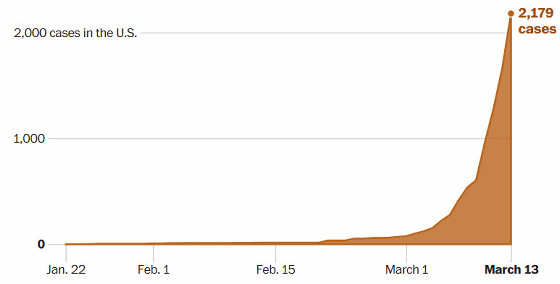
The following figures show 'healthy people' whose light blue is not sick, red 'sick', and purple 'healthy' after a certain period of infection. The simulation simulates the spread of infection in a space where 200 people can move freely, provided that the disease spreads when a sick person comes into contact with a healthy person. At first, only one person was infected ...
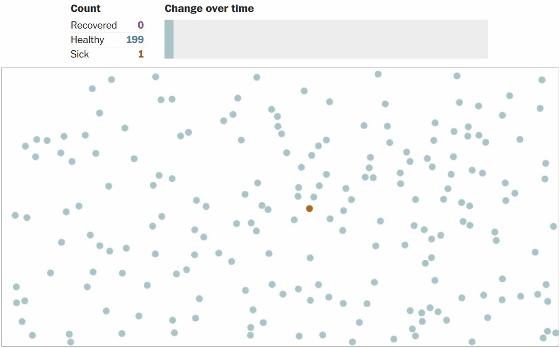
Contact has spread the infection and the number of sick people has risen to more than 100 at a stretch without any recovery.
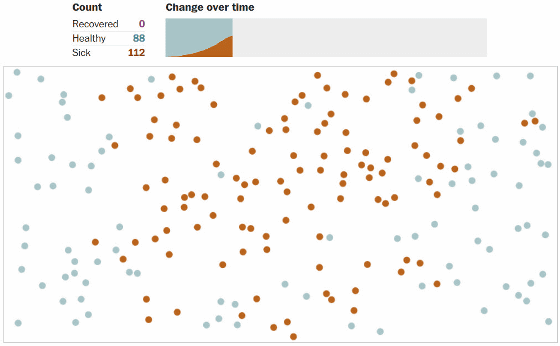
The following is a graph showing the change of recovered person (Healthy) and sick person (Sick) over time. Eventually, by the time the recovered man appeared, it was all about being infected.

In the simulation that reproduces the condition of imposing quarantine and quarantine on immigrant due to infection, it is simulated that there is only one infected person among the isolated people. The following means that the left side of the double line is isolated.
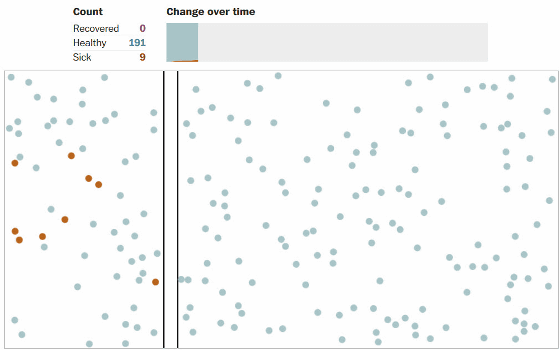
When the people who were in quarantine have been tested negative and the quarantine has been lifted: Some of the quarantined individuals have recovered, while others have been false negatives, so the infection is spreading slowly but gradually.
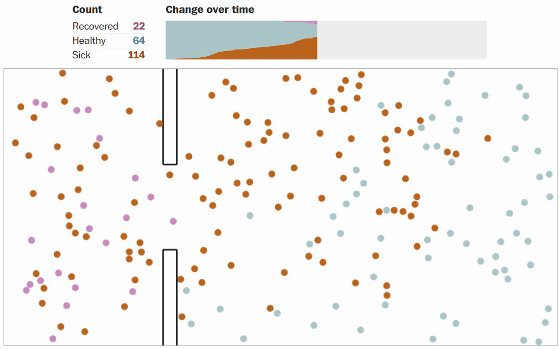
Looking at the graph, it turns out that everyone eventually becomes infected, and that quarantine alone cannot control the infection.

Although it is desirable to 'avoid contact with people' as much as possible, 'Some people have to go out for work or shopping, or because they are optimistic about the situation and do not stop going out, Expansion is inevitable, 'said Stephen.
Therefore, of the 200 people, 50 people continue to move, 150 people do not move, and the simulation is performed to reproduce what happens if you try to avoid contact with people as much as possible. When all 200 people move around, almost everyone was infected in a short time, but if many people carry out `` avoid contact with people as much as possible '', you can see that the speed of infection is considerably slower .
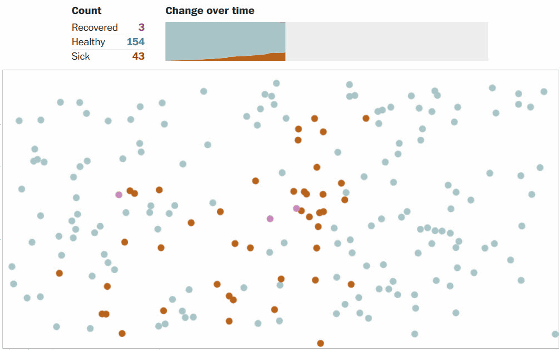
Eventually, the total number of infected people was found to have converged at around 150, and some healthy people remained.

Of the 200 people, 150 people do not move, one out of the remaining 50 people moves randomly, and the simulation with more `` avoid contact with people as much as possible '' is more infectious, Spread becomes gentle.
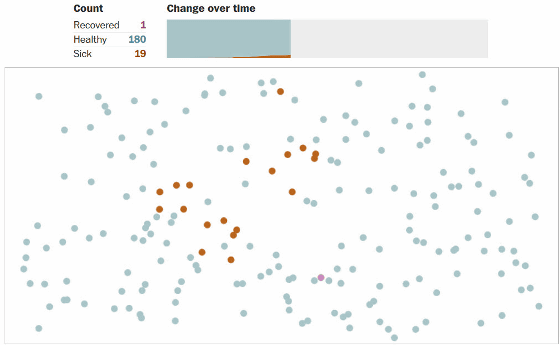
The total number of infected people has converged at around 70, less than half, indicating that the infection has been contained.

The simulation is simple and differs from the actual spread of the infection. However, `` Infection is expanding through contact with familiar people such as family and workplace, and it is highly possible that infection spreads from one person to many people like simulation, '' Stephen said. States.
The actual simulation can be confirmed by animation from the following page.
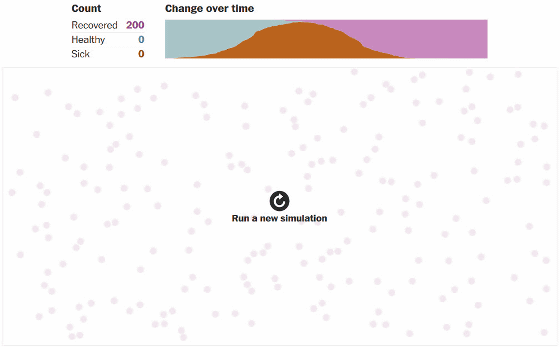
Related Posts:
in Note, Posted by darkhorse_log







